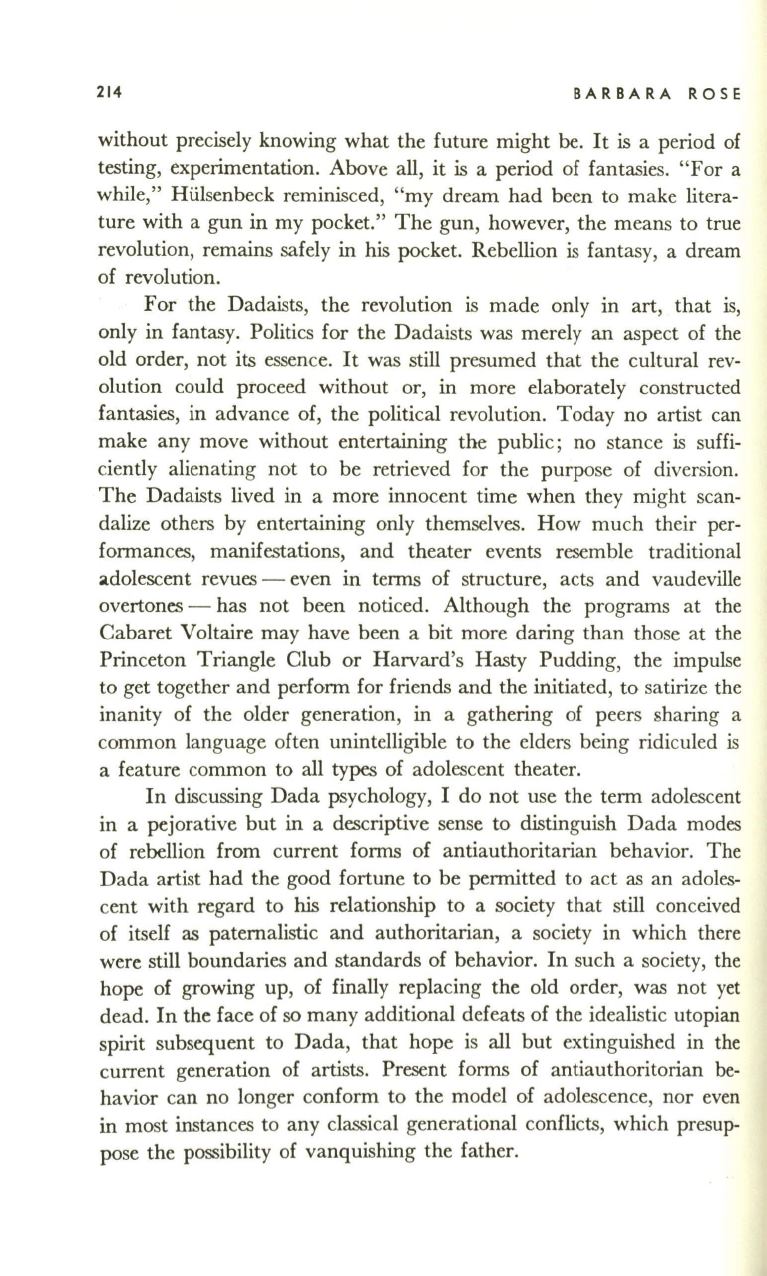
214
BARBARA ROSE
without precisely knowing what the future might be.
It
is a period of
testing, experimentation. Above all, it is a period of fantasies. "For a
while," Hiilsenbeck reminisced, "my dream had been to make litera–
ture with a gun in my pocket." The gun, however, the means to true
revolution, remains safely in his pocket. Rebellion is fantasy, a dream
of revolution.
For the Dadaists, the revolution is made only in art, that is,
only in fantasy. Politics for the Dadaists was merely an aspect of the
old order, not its essence.
It
was still presumed that the cultural rev–
olution could proceed without or, in more elaborately constructed
fantasies, in advance of, the political revolution. Today no artist can
make any move without entertaining the public; no stance is suffi–
ciently alienating not to be retrieved for the purpose of diversion.
The Dadaists lived in a more innocent time when they might scan–
dalize others by entertaining only themselves. How much their per–
formances, manifestations, and theater events resemble traditional
adolescent revues - even in terms of structure, acts and vaudeville
overtones - has not been noticed. Although the programs at the
Cabaret Voltaire may have been a bit more daring than those at the
Princeton Triangle Club or Harvard's Hasty Pudding, the impulse
to get together and perform for friends and the initiated, to satirize the
inanity of the older generation, in a gathering of peers sharing a
common language often unintelligible to the elders being ridiculed is
a feature common to all
types
of adolescent theater.
In discussing Dada psychology, I do not use the term adolescent
in a pejorative but in a descriptive sense to distinguish Dada modes
of rebellion from current forms of antiauthoritarian behavior. The
Dada artist had the good fortune to be permitted to act as an adoles–
cent with regard to
his
relationship to a society that still conceived
of itself as paternalistic and authoritarian, a society in which there
were still boundaries and standards of behavior. In such a society, the
hope of growing up, of finally replacing the old order, was not yet
dead. In the face of so many additional defeats of the idealistic utopian
spirit subsequent to Dada, that hope is all but extinguished in the
current generation of artists. Present forms of antiauthoritorian be–
havior can no longer conform to the model of adolescence, nor even
in most instances to any classical generational conflicts, which presup–
pose the possibility of vanquishing the father.


